
This edition of Directions in Highway Safety, GHSA’s member newsletter, features articles on equity and traffic safety, a look ahead towards 2023, how the Congressional mid-term elections may impact GHSA’s work, NHTSA’s Final Rule, and the latest association projects, reports, member spotlights and more.
Quick Links: Cover Story | Executive Director’s Report | State of the States | From Washington | Did You Know? | From Our Perspective
Institutionalizing Equity in Roadway Safety
During the past few years, the highway safety community has increased its focus on working toward equitable outcomes for all road users. GHSA has been at the forefront of these efforts, sponsoring research, issuing reports and developing recommendations for State Highway Safety Offices (SHSOs) and their partners. States have taken these recommendations to heart and are implementing programs to engage underserved communities where people face greater safety risks and disproportionate impacts. As we continue this critical work, the focus is on how SHSOs can institutionalize equity in roadway safety and how GHSA can best support members in this effort.
The National Roadway Safety Strategy (NRSS) released by the U.S. Department of Transportation is an ambitious effort based on the Safe System approach. The NRSS includes a strong focus on achieving equitable outcomes, and that prioritization has carried through to the work of the National Highway Traffic Safety Administration (NHTSA). In NHTSA’s Notice of Proposed Rulemaking published this past September, the agency explained new requirements for public and community participation in funding decisions, with the intent of making sure highway safety investments reach all those that need it.
There are a growing number of resources available for SHSOs seeking to engage underserved communities in these important efforts. Unrestricted grant funding opportunities available from GHSA and our partners, such as the National Roadway Safety Foundation's (NRSF) youth active transportation safety grants and Ford Motor Company Fund teen mobility grants, are helping states reach youth in communities that are not typically engaged in traffic safety initiatives.
Equity was one of the topics of discussion at this month’s GHSA Executive Board Meeting. Board members shared state initiatives and discussed the importance of integrating equitable outcomes into their planning. Understanding SHSOs’ need for additional guidance and resources to respond to the new federal grant requirements, the Board voted to establish a standing Equity and Engagement Committee to oversee and guide the association’s work in this area. Additional announcements regarding this new effort will be shared in January.

A New Year of Lifesaving Work
It’s hard to believe 2022 is coming to an end. As the year winds down, it is the perfect time to reflect on the challenges and successes of the past twelve months and to look ahead to what is on the horizon. 2023 is going to be an exciting and important year for GHSA.
Most notably, for the first time in our association’s history, we are heading to the Big Apple for our 2023 Annual Meeting, August 12-16 in the heart of Times Square. Our 2023 theme is “Connecting Communities: Putting Vision Zero Into Action.” Where better than New York City – one of the first jurisdictions to embrace Vision Zero – to explore innovative solutions to achieve zero traffic deaths? Attendees will hear from national experts who have made progress building grassroots coalitions to affect real change through a multi-pronged, Safe System approach that includes behavioral interventions.
Producing our Annual Meeting is only possible with the financial support of our generous Highway Safety Champions. While we are delighted to have many commitments already, there are still exposure opportunities available, including the welcome reception and exhibit showcase, registration bag, lanyards, newsletter inserts, mobile app, and more. For the most up-to-date list, visit our website.
Another highlight of 2023 will be the debut of GHSA’s Emerging Leaders in Highway Safety Seminar for non-director level State Highway Safety Office (SHSO) staff. This in-person training will be piloted April 25-27 in Denver. Attendees will learn the core principles of leadership and real-world tactics to apply them to highway safety administration and planning issues. Applications are being accepted now through January 6. Prospective students should secure the endorsement of their SHSO Director or Coordinator before applying.
As we roll out new resources, such as the leadership seminar, we also celebrate our ongoing programs. In fact, 2023 marks the 20th anniversary of our longest-running partnership – the Ford Driving Skills for Life (Ford DSFL) teen safe driving training program. For the past two decades, the award-winning tour has traveled across the country to teach teens – at no cost – the skills they need to be safe on the road. Additionally, since 2008 Ford DSFL has provided direct grant funding to states to supplement their own teen driving efforts. To date, more than 50 grants totaling over $1 million have been awarded to 30 states. Read more about what GHSA and Ford DSFL have in store for next year.
Whether it’s new educational opportunities or ongoing program resources, I’m so pleased that GHSA will start the new year continuing to support the great work our members are doing to help prevent crashes and save lives on our roadways!
My best wishes to you and yours for a very merry – and safe – holiday season!
Welcome New Members
GHSA is pleased to welcome the following new Associate Members. Click below to learn about their mission and services:

Ford Fund Supports Innovative Solutions to Mobility
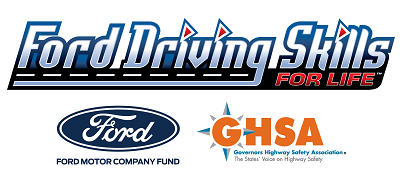 Since 2008, Ford Motor Company Fund’s Driving Skills for Life (DSFL) program has awarded innovative grants to State Highway Safety Offices (SHSO) to develop, implement and evaluate new and innovative teen safe driving programs. As we celebrate GHSA’s 20th year of partnership with Ford and the more than $1 million awarded to SHSOs to support everything from educational activities at state fairs to student video contests, hands-on instructional events and more, GHSA reflects on the impactful programs that states conducted during the past year and looks to more innovation in 2023.
Since 2008, Ford Motor Company Fund’s Driving Skills for Life (DSFL) program has awarded innovative grants to State Highway Safety Offices (SHSO) to develop, implement and evaluate new and innovative teen safe driving programs. As we celebrate GHSA’s 20th year of partnership with Ford and the more than $1 million awarded to SHSOs to support everything from educational activities at state fairs to student video contests, hands-on instructional events and more, GHSA reflects on the impactful programs that states conducted during the past year and looks to more innovation in 2023.
In 2022, GHSA and the Ford DSFL program provided grants totaling $135,000 to the Kentucky, Michigan, Montana, New York, Tennessee and Utah Highway Safety Offices. If SHSOs are seeking new ideas to enhance the state’s teen driving safety program, consider the following:
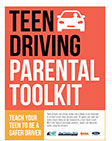 The Michigan Office of Highway Safety Planning developed a parent toolkit focused on teen safe driving practices. The resource includes information on how to be an involved parent, facts about teen speeding, tips to help teens drive safely in inclement weather conditions, teen defensive driver programs and additional resources to help parents address safe driving behaviors with their novice drivers.
The Michigan Office of Highway Safety Planning developed a parent toolkit focused on teen safe driving practices. The resource includes information on how to be an involved parent, facts about teen speeding, tips to help teens drive safely in inclement weather conditions, teen defensive driver programs and additional resources to help parents address safe driving behaviors with their novice drivers.- The Utah Highway Safety Office created an educational video for teens, Speeding is Not a Game, that highlights the local story of a teen who died in a speed-related crash.
- The Tennessee Highway Safety Office (THSO) conducted a series of in-person teen safe driving events, dubbed Rule the Road, that included providing hands-on experience from certified emergency vehicle operators along with a statewide speeding campaign, “Slow Down Tennessee.” THSO announced an outstanding reduction in teen-involved crashes and fatalities this year. From Federal Fiscal Year (FFY) 2021 to 2022, teen drivers saw a larger percentage reduction in speed-related crashes than other drivers, including a 2.0% reduction in overall teen crashes, a 6.5% reduction in overall teen fatalities and a 9.1% reduction in crashes involving teen drivers that were speeding.
GHSA was delighted to close out the year with the Ford DSFL team at hands-on training sessions in Fontana and Oceanside, California. GHSA’s Senior Director of External Engagement Pam Shadel Fischer joined Tim Weisberg, California Office of Traffic Safety’s Deputy Director of Marketing and Public Affairs, at the Fontana event, where they shared their insights on teen safe driving with more than 600 parents and teens. They also had the opportunity to continue the conversation as teens completed stations in hazard recognition, vehicle handling, space and speed management, and distracted and impaired driving.


There’s more to come! With Ford Fund’s commitment to advancing access to safe mobility in underserved and socioeconomically disadvantaged communities and improving teen safety on the road (whether driving, walking and/or bicycling), GHSA and Ford DSFL are providing $100,000 in grant funding to four states. Stay tuned to learn about how they are using these mobility grants to provide community-based innovative teen traffic safety programs in 2023.
Walk, Bike and Scoot into the New Year with these Safety Initiatives
As more youth travel on foot and wheels, innovative programs are needed to keep them safe. In 2022, GHSA partnered with the National Road Safety Foundation (NRSF) to award SHSOs in Connecticut, New York and Pennsylvania grants totaling $75,000 to implement community-based, youth active transportation safety (YATS) programs encouraging safe walking, biking and scooting.
These first-of-their-kind, peer-to-peer initiatives provided teens the opportunity to positively impact youth active transportation in underserved and socioeconomically disadvantaged communities:
 The Connecticut Highway Safety Office partnered with the Connecticut Children’s Injury Prevention Center and the Hartford Yard Goats Minor League baseball team’s Young Ambassador program to train teens to be peer-to-peer bike ambassadors and deliver pedestrian and bicycle safety training.
The Connecticut Highway Safety Office partnered with the Connecticut Children’s Injury Prevention Center and the Hartford Yard Goats Minor League baseball team’s Young Ambassador program to train teens to be peer-to-peer bike ambassadors and deliver pedestrian and bicycle safety training.- The Pennsylvania Department of Transportation Safety Operations Bureau partnered with the United Way of Erie County to pilot a Safer Walking Routes to School initiative at Iroquois Elementary, a Title 1 school. Hazards students face as they walk to school or their bus stops were mapped.
- In New York, the Governor’s Traffic Safety Committee teamed up with the New York City Department of Transportation to conduct a multilingual education and outreach traffic safety program in the Bronx, one of the nation’s most diverse neighborhoods. Teens were trained to provide instruction and distribute bicycle helmets, lights and bike, scooting and skateboarding safety information to their peers and young children.

NRSF and GHSA are continuing their partnership in 2023 by offering three grants of up to $25,000 each to help other SHSOs work with community partners to develop YATS programs serving youth in underserved and rural communities. GHSA looks forward to sharing these innovative approaches in a future issue of this newsletter!
Ride-hailing Grants Help Curb Impaired Driving this Holiday Season
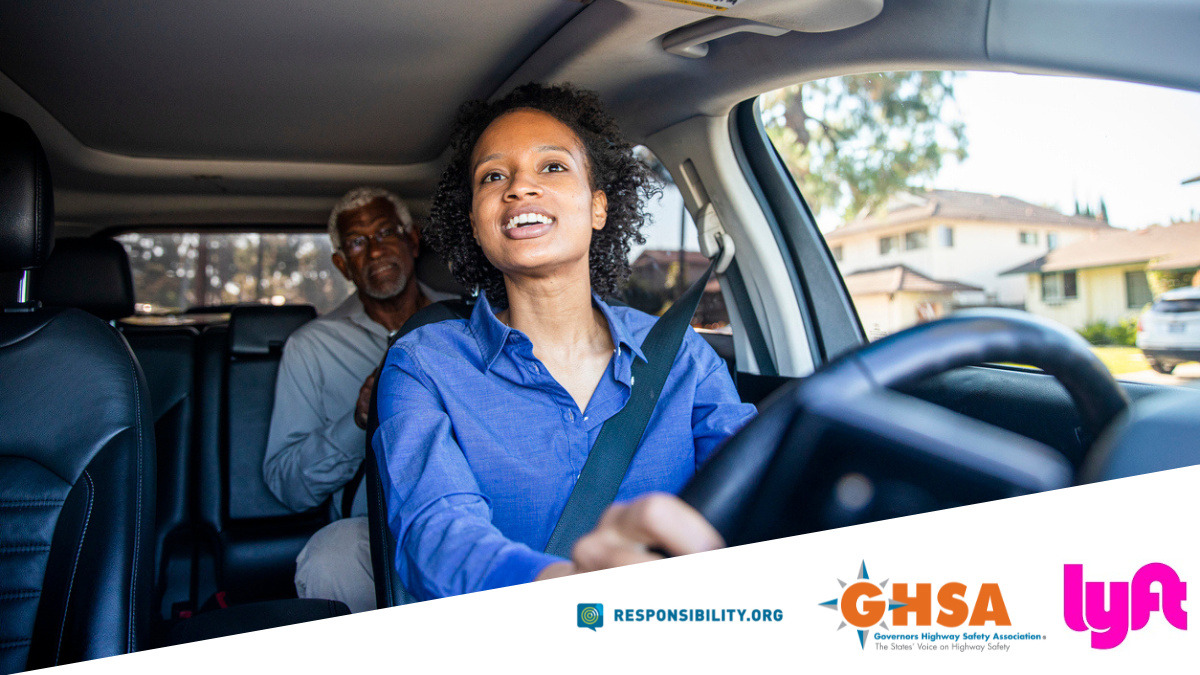 With the holidays in high gear, GHSA partnered with Lyft and Responsibility.org to provide grants to the Colorado, Maryland, Missouri and Texas Highway Safety Offices to support initiatives that promote using ride-hailing rather than getting behind the wheel after consuming alcohol or other impairing substances, a proven countermeasure that saves lives. Learn more about each state’s campaign on the GHSA website.
With the holidays in high gear, GHSA partnered with Lyft and Responsibility.org to provide grants to the Colorado, Maryland, Missouri and Texas Highway Safety Offices to support initiatives that promote using ride-hailing rather than getting behind the wheel after consuming alcohol or other impairing substances, a proven countermeasure that saves lives. Learn more about each state’s campaign on the GHSA website.
The program is more important than ever, as last week the National Highway Traffic Safety Administration (NHTSA) announced the findings of a new study of trauma center data that examined the pervasiveness of alcohol and drug use in serious and fatal crashes involving drivers, bicyclists and pedestrians. According to the new NHTSA study, 56% of seriously or fatally injured road users tested positive for alcohol or some type of impairing substance, with cannabis (25%) being the most prevalent. In addition, two or more drugs were found in 18% of serious injury cases and 32% of the fatalities.

Following Congressional Mid-Term Elections, NHTSA Finalizes Safety Grant Rules
Last month, U.S. voters went to the polls for Congressional mid-term elections and delivered a Democratic majority in the U.S. Senate and a Republican majority in the U.S. House. Congress is currently selecting its leadership and a slate of retirements, election losses, transitions and promotions will have a substantial impact on who leads the Congressional committees overseeing NHTSA programs. Despite these changes, split control of the two chambers will likely prevent constructive agreement on major legislation over the next two years.
The Infrastructure Investment and Jobs Act (IIJA) does not expire until September 30, 2026. However, this incoming Congressional session will present opportunities to begin laying the groundwork for future reauthorization changes. We expect members of Congress to introduce several pieces of standalone safety legislation. Other potential topics of interest include consideration of a federal framework on autonomous vehicle technology and the safety impacts of making changes to federal cannabis laws.
The U.S. also held 36 gubernatorial elections, resulting in the election of eight new Governors and four that have switched parties. Changes in governorships can often mean the appointment of new State Highway Safety Office (SHSO) leadership.
Meanwhile, NHTSA is working to complete the Final Rule governing NHTSA’s safety grant programs in the wake of enactment of the IIJA last year. GHSA and many partners and stakeholders submitted comments on NHTSA’s Notice of Proposed Rulemaking (NPRM), released September 15, which outlines the agency’s planned regulatory changes. NHTSA projects that it will announce the Final Rule as early as February.
U.S. DOT is also re-examining the Department’s rules addressing Buy America requirements. Buy America rules apply to purchases of construction materials and manufactured products for transportation projects using federal funds, which includes purchases made with NHTSA grant funds. NHTSA currently has a public interest waiver that exempts items under $5,000, reflecting the many smaller purchases typical for SHSOs. The Department is considering a new public interest waiver that may override NHTSA’s existing waiver that would increase the purchasing threshold. GHSA submitted comments in support of reform, but also asked for clarifications that would maximize the new policy’s effectiveness.

Have a Research Idea? Submit It for Funding
GHSA selects and monitors projects under the Behavioral Traffic Safety Cooperative Research Program (BTSCRP). Launched in 2014, BSTCRP currently receives $3.5 million annually to conduct research that helps inform the work of the State Highway Safety Offices and their partners. Each year, the public is invited to suggest behavioral traffic safety research by submitting a problem statement. The call for research problem statements is now open.
More information and a link to the application can be found on the main BTSCRP webpage. The deadline to submit problem statements is February 17, 2023.
New Research Reports Provide Guidance on ADA and Workplace Traffic Safety Programs
The Behavioral Traffic Safety Cooperative Research Program (BTSCRP) partnership between GHSA, NHTSA and the Transportation Research Board released two reports with implications for SHSOs.
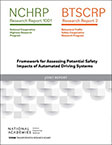 The first report, Assessing the Impacts of Automated Driving Systems on the Future of Transportation Safety, provides guidance to state and local agencies as well as other stakeholders on how to adapt the framework for a variety of scenarios. The report also provides a practical application of the framework by summarizing the results of a proof-of-concept study that involved piloting the framework with two state DOTs.
The first report, Assessing the Impacts of Automated Driving Systems on the Future of Transportation Safety, provides guidance to state and local agencies as well as other stakeholders on how to adapt the framework for a variety of scenarios. The report also provides a practical application of the framework by summarizing the results of a proof-of-concept study that involved piloting the framework with two state DOTs.
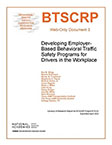 Developing Employer-Based Behavioral Traffic Safety Programs for Drivers in the Workplace, examines employer-based behavioral traffic safety programs for workers who operate motor vehicles. The report provides an overview of the current state of practice, a review of behavioral change theories which use various strategies to encourage people to change from an unsafe habit to a safe one, and measures of program effectiveness. The interactive web-based guidance tool provides employers with an accessible and flexible way to learn about current practice and theory alongside resources for planning, implementing and evaluating employer-based behavioral traffic safety programs.
Developing Employer-Based Behavioral Traffic Safety Programs for Drivers in the Workplace, examines employer-based behavioral traffic safety programs for workers who operate motor vehicles. The report provides an overview of the current state of practice, a review of behavioral change theories which use various strategies to encourage people to change from an unsafe habit to a safe one, and measures of program effectiveness. The interactive web-based guidance tool provides employers with an accessible and flexible way to learn about current practice and theory alongside resources for planning, implementing and evaluating employer-based behavioral traffic safety programs.
Driven to Distraction: New IIHS Study Reveals Significance of This Dangerous Driving Behavior
A recent Insurance Institute for Highway Safety (IIHS) survey of 2,000 drivers found that nearly two-thirds reported performing one or more distracting activities of any type most or every time they drove over the past 30 days. The research also revealed that gig-economy workers were more than twice as likely as other drivers to engage in distracting activities and nearly four times as likely to regularly use smartphone apps while driving. These gig drivers were also using their devices well beyond communicating with customers and for navigational purposes.
“These results show that nobody is immune to distraction and suggest that hands-free capabilities may be making us a little too comfortable using our phones and other devices behind the wheel,” said IIHS President David Harkey. For one of the most comprehensive looks at this pervasive yet preventable traffic safety problem, read the GHSA/GM report, Directing Drivers’ Attention: A State Highway Safety Office Roadmap for Combating Distracted Driving.
National Young Women’s Scholarship in Traffic Injury Prevention
The National Association of Women Highway Safety Leaders, Inc. (NAWHSL), offers scholarships to support young women (see application and details) who aspire to careers saving lives and preventing injuries on America’s roadways. The scholarship recognizes, assists and trains women working on practice-based projects or research in traffic injury prevention. The award includes a $1,000 stipend, NAWHSL membership and registration at NAWHSL’s 2023 Annual Traffic Safety Leadership Conference in New York City. Applications are due January 20, 2023, and the winners will be recognized at the 2023 NAWHSL Conference.
Member Spotlight
GHSA appreciates the support of our Associate Members, who are committed to working with us to achieve a zero fatalities goal. This month, we’re featuring the Keri Anne DeMott Foundation’s Bill DeMott and SmartSimple’s David Doherty.
Want to be featured in the next issue of Directions? Email Kerry Chausmer.

Telling a Story: Traffic Safety Message Development for Tribal Communities
 Laura Sonderup
Laura Sonderup
Managing Director
Heinrich Marketing, Inc.
To be impactful, traffic safety messaging must be tailored for specific audiences. Unintentional injuries continue to be one of the leading causes of death for American Indian and Alaska Natives (AI/AN) ages 1 to 54, with 35% of unintentional deaths due to motor vehicle-related injuries.
Wyoming is considered one of several states where AI/AN communities are experiencing more unintentional motor vehicle related deaths per capita. To save lives and promote healthy communities, the Wyoming Department of Transportation (WYDOT) has partnered with Heinrich Marketing, and their multicultural division, Hispanidad, since 2010 to create culturally, and in some cases linguistically, relevant messaging to address traffic safety issues within Tribal communities.
There are many evidence-based strategies to reduce motor vehicle crash injuries and deaths within the general population. However, in addition to leveraging educational, environmental, engineering and policy-related approaches, it is vital to understand the critical role of cultural identity and collaboration when crafting results-oriented messaging for use within Tribal communities.
Cultural identity is a critical component of effective behavior change message development and as part of WYDOT’s efforts to build on the importance of culture and belonging, messaging focuses on leveraging respected members of both the Northern Arapaho and Eastern Shoshone Tribes, living on the Wind River Reservation, as traffic safety influencers. One creative strategy that has proven effective in Wyoming involves featuring respected community members – young and old – and empowering these individuals to become storytellers.
Storytelling, or oral tradition, remains an essential part of many indigenous cultures today. In Wind River Country, community members often tell stories of loss (due to crashes) through video and other mediums. Predictably, hearing a story about impaired driving or lack of seat belt use from someone you know has far more impact than a message coming from the government. Likewise, video storytelling often allows for leveraging native language and keeping words “alive,” which can be an equally important element of Tribal traffic safety message development.
The videos included below were developed using storytelling and in partnership with local Tribal community members.
Identifying and properly referencing values, customs, symbols and regalia provides a collaborative opportunity to create richly textured visual images – and traffic safety messages – that are hard to ignore. In fact, between 2010 to 2020, DUI arrests have decreased 79% in Fremont County. Based on these positive results, WYDOT continues to invest heavily in these collaborative communication efforts.
When planning your outreach calendar and efforts to address traffic safety in Tribal communities in your state, highlight their heritage by working with them to share their stories.


